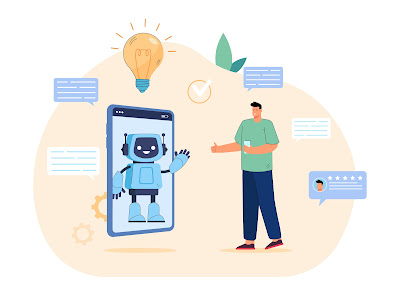Relevance of SEO in the Software as a Service (SAAS) Industry?
What is Software as a Service (SAAS) Industry?
SaaS stands for "Software as a Service." The SaaS
industry is a business model in which software is delivered over the internet,
typically on a subscription basis, rather than through a one-time purchase. In
this model, the software is hosted by a third-party provider and is accessible
to customers via a web browser or mobile app.
SaaS companies offer various software products and
services, such as customer relationship management (CRM), marketing automation,
project management, accounting, and human resources. These software products help businesses improve their productivity, efficiency, and
profitability.
The SaaS industry has proliferated in recent years, as more
businesses have shifted from traditional on-premise software to cloud-based
solutions. This has led to increased competition in the industry, as well as a
greater focus on innovation and customer experience.
why SAAS the industry is unique for seo?
The SaaS (Software as a Service) industry is unique for SEO
(Search Engine Optimization) because of several reasons:
Highly competitive industry:
The SaaS industry is highly competitive, with numerous players competing for the same keywords and audience. As a result, SEO becomes crucial for SaaS companies to differentiate themselves from their competitors and attract relevant traffic to their websites.
Long buying cycle:
The SaaS buying cycle is typically longer
than other industries, with customers spending a considerable amount of time
researching and comparing different software solutions before making a
purchase. SEO plays a critical role in attracting potential customers at
various stages of the buying cycle and guiding them toward a purchase.
Content-driven marketing:
SaaS companies often rely on
content-driven marketing strategies, such as blogging, whitepapers, and
webinars, to educate potential customers about their software solutions. SEO
plays a vital role in driving organic traffic to these pieces of content and
generating leads for the business.
Complex products:
SaaS products can be complex, with
numerous features and functionality that require explanation. SEO helps SaaS
companies create content that explains these features in detail and answers
potential customers' questions.
Targeting niche audiences:
SaaS companies often target niche
audiences, such as businesses in a specific industry or with a particular set
of requirements. SEO helps these companies reach their target audience through
targeted keyword research and content optimization.
Overall, SEO is crucial for SaaS companies to drive organic
traffic, generate leads, and differentiate themselves in a highly competitive
industry.
 |
| SAAS SEO |
what are the benefits of SEO for the SAAS industry?
SEO (Search Engine Optimization) can offer several benefits
to SaaS (Software as a Service) companies, including:
Increased visibility:
SEO helps SaaS companies improve their visibility on search engines, making it easier for potential customers to find their products and services. This can result in increased website traffic and brand awareness.
Cost-effective marketing:
SEO is a cost-effective marketing
strategy that can help SaaS companies generate high-quality leads at a lower
cost than traditional advertising channels. This is especially important for
SaaS companies that may have limited marketing budgets.
Better user experience:
SEO involves optimizing a website
for user experience, which can lead to a better overall customer experience.
This includes improving website speed, navigation, and mobile responsiveness,
all of which can help improve customer satisfaction and reduce bounce rates.
Higher conversion rates:
SEO can help SaaS companies target
relevant keywords and create content that resonates with their target audience.
This can lead to higher conversion rates as potential customers are more likely
to engage with content that addresses their specific needs and pain points.
Competitive advantage:
SEO can help SaaS companies
differentiate themselves from their competitors by optimizing for unique
keywords and creating content that positions them as thought leaders in their
industry. This can help build brand trust and loyalty, resulting in long-term
customer relationships.
Overall, SEO can be a powerful tool for SaaS companies to
improve their online presence, generate high-quality leads, and gain a
competitive advantage in their industry.
 |
| SAAS SEO |
what are the tips for improving your SAAS SEO strategy?
Here are some tips for improving your SaaS (Software as a
Service) SEO (Search Engine Optimization) strategy:
Conduct keyword research:
Identify relevant keywords that
your target audience is searching for and optimize your website and content
around those keywords. Use tools like Google Keyword Planner and SEMrush to
find keywords with high search volume and low competition.
Optimize your website structure:
Ensure that your website
has a clear and logical structure, with a sitemap that is easy for search
engines to crawl. Use descriptive and keyword-rich URLs, and optimize your page
titles and meta descriptions.
Create high-quality content:
Create high-quality and
relevant content that addresses your target audience's pain points and answers
their questions. This can include blog posts, whitepapers, case studies, and
product demos. Use a content calendar to ensure a consistent publishing schedule
and promote your content on social media and other relevant channels.
Build quality backlinks:
Build high-quality backlinks from
reputable websites in your industry. This can improve your website's domain
authority and help drive more traffic to your website. You can achieve this
through guest posting, influencer outreach, and creating shareable content.
Optimize for mobile:
Ensure that your website is optimized
for mobile devices. Google favors mobile-friendly websites and penalizes those
that are not mobile-friendly. Make sure that your website loads quickly on
mobile devices and that your content is easy to read and navigate.
Monitor and analyze your results:
Use tools like Google
Analytics and SEMrush to monitor your website's traffic and performance.
Analyze your results to identify areas of improvement and adjust your SEO
strategy accordingly.
By following these tips, you can improve your SaaS SEO
strategy and attract more relevant traffic to your website, resulting in
higher-quality leads and improved conversion rates.
To Conclude SEO is constantly evolving, so it's important to stay up-to-date with the latest trends and best practices. This includes keeping up with algorithm updates, changes in user behavior, and emerging technologies.

























